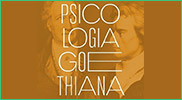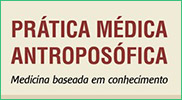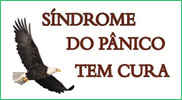The theory of cognition, as the name goes, is a theory, i.e. na explanation and an interpretation of human knowledge. It refers objectively to thoughts, in their correlation with the objects. However, the current science, by concentrating on the dogma imposed by Kant (What can I learn? Answer: “I can only lern what science predetermine”), has raised the technology of knowledge, aiming only at the “technicist production”. Thus it is applied to our cultural life by means of the media (TV, radio, newspapers, magazines, culture, science, etc.).
But its basic premise is: what is knowledge? This formulation allows a larger range of possibilities, since it is interested in the cogniton phenomenon (how is cognition processed in the human being?). As you will see, we should start from the “observation” and exact “description” of the object, so that we can grasp the “idea” of the phenomenon.
For Plato, things and concepts are results of pre-terrestrial (in the World of Ideas) and reencarnatory experiences. For Arlstotle, as well as for Thomas Aquinas, the spirit does not possess any previous knowledge. On their birth, the human being is a tabula rasa (a blank sheet of paper on which he will write down his story by means of experience). That is the reason why the act of deepening into materialness in order to understand in by means of experience is called empirical (empeiria = experience). From this point of view, all our knowledge derives from our experience of the world, supported by our organs of senses. The only objects that can be conceived are those which are seen or can be “imagined” from what can be seen. This resulted in the present technicist empirical scientific view of concentrating on observation rather than on the intellect (but the idea still misses).
It has been observed, however, that no external object is either necessary or unchangeable or eternal. On the contrary, all of them are contingent, changeable and ephemeral. Because of that, it is necessary to use a “statistical method” and the “probability calculation” so as to achieve an approximant certainty of the phenomenon observed. You can carry out as many experiments as you wish, as many observations as you wish, but neither an unchangeable or eternal rule will follow from this. Within the thought, also, the intellect, by observing the phenomenon, searches its “thinking file” for something similar to the object so as to make the necessary analogy for an inner understanding. In a voyage to Java, Marco Polo, for instance, sees a strange animal that he had never seen before. He thinks it is something similar to a “unicorn”. Nowadays it is known that the animal was a rhinoceros.
The thinking process has to do with the human necessity to reach an “idea” of what that object represents in the end. It is only at this thinking level that we are self-satisfied. As Marco Polo did not possess a similar record in his intetlect, he tried to compare that “much ugly beast to be seen” to something he possessed in his mind: the unicom. In other words, he kept himself to the intellect domain and did not achieve an “idea” of that animal.
As we can see, the world of thinking relations can be reached from observation, with the aim of achieving an “idea” and, as Goethe says, “the thought itself changes into a phenomenon”. Two processes take place simultaneously: from the outside to the inside and vice-versa. As the external objects are always changeable, so are our thoughts regarding them. That is the reason why there is not a definite thought concerning the things in the world. Everything is in movement, in evolution. So, how can the process of achieving a piece of knowledge be understood? It is necessary to refer to Aristotle to explain the three processes mentioned: while observing an object, the subject can design an image of the object within, by means of the noûs pathetikós (psyche or soul), possible or passive understanding. It is only feasible to extract the idea therein, by means of the special interference of noûs poietikós (spirit), the real or active understanding. The following occurs: the spirit “acts as light”, according to Aristotle himself, spiritually illuminating the “image” formed in the intellect, to be impressed on the very soul (other on the etheric?).
This triad: to observe, to intellectualize and to idealize (to from the “idea”) was develop by Goethe and, because of that, we have entitled it Goethe’s scientific-deductive method1. To observe means to devote to the pure experience (empiricism), that is to say, to let the phenomenon speak for itself, without the interference of the observer, but with the whole presence of spirit. It is formed, thus, the “image” of the object within the observer’s mind. To intellectualize means to make the necessary correlations using the knowledge obtained from the sciences and personal experiences. In order to do so, mediated deductive arguments are used (i.e., by using the various elements of the problem, a conclusion, concept or thesis is seeked). To idealize means to have the inner certainty of the fact observed, as the domain of causes is reached (to form the idea).
GOETHE’S SCIENTIFIC-DEDUCTIVE METHOD
| “To Observe” | “To discern, to calcule, to measure, to weigh” | “To comtemplate” |
| Physical organs | Intellect | To idealize |
| Physical body | Soul | Spirit |
| Knowledge | Intuitive |
How can the apparent thinking duality between the intellect and the idea be .understood? As we háve seen, both the external objects and our trivial thoughts are unsteady and changeable at every moment. This instability jeopardizes the knowledge of the true being who seeks for himself within, something that can be judged: this is necessary and true. This process only occurs within the spirit, and not in the unsteady technical thoughts (of the soul), nor in the environment. These have to do with the “empirical” evidence (that the intellect incorporates) and are something very distinct from the “truth” (that the spirit elaborates). For instance, 2+2=4. For the “intellect”, it can be understood how the addition of two mathematical units is processed, but the interterence of the spirit is necessary to realize the totatity. From the intellectual rule of necessity (it is “necessary” that it is this way and not otherwise ), we move towards the inner satisfaction, as something “true and harmonious”: That is the reason why Aristotle claims that the “comprehension is united”2. In other words, when a phenomenon is understood, it is already in the divine thought domain (the comprehension is united to the divine).
It happens that, nowadays, the Science has specialized in the technology and, for that reason, does not know what the “living creature” is, what the complex living organisms are. And it is exactly to the intellectual sphere, that new elements need to be brought, so as to understand that the “living creature” needs other scientific arguments. Here we find another of Goethe’s merits. He developed a judicious, intellectual plot, of organic nature, in the sense of possessing the necessary elements to understand the living creature. In order to do that it is necessary to learn3: “… the habits (NATURAL HISTORY), the material nature as power and its spatial relationship (DOCTRINE OF NATURE), the “parts” (ANATOMY), the “parts” of the matter (CHEMISTRY), the living set according to the physical forces (ZOONOMY), the living set subordinated to spiritual forces (PSYCHOLOGY), the forms in their “parts” or in their “whole” (MORPHOLOGY), the organic set under spiritual forces (PHYSIOLOGY)”.
Our task is to bridge the gap between the “intellect” and the “idea”. This was already designed by Aristotle by means for his “10 categories”4. These represent the relationship between subject and predicates, with the aim of knowing the objective structures of being. First, the phenomenon or object is verified: it represents the “essence” in itself because it truly exists. Second, the predicates are associated: quality, quantity, time, place, position, relations, state, action and passion. For example: A (quantity) bewildered (passion) white (quality) horse (essence) is standing (position) motionless (action) and saddled (state) by the jockey’s side (relation) in the horse race track (place) in the morning (time). This means that the “essence” is the being that manifests itself in different ways (leghetai men pollachos), i.e., what matters is how the phenomena occur, for there are “the essence, the soul, the vitality (the etheric) and the physical”.
By doing, we reach the “intuitive knowledge”, as it was observed in the chart above, which is an addition of “intellect” and “idea”. Knowledge has to do with the “intellect” (one part of the soul, the Ego) and intuitive with the “ideas” (spirit). The first dissects, dichotomizes and the second synthesizes, integrates, recognizes the unity of being. It can be understood as follows: from the “image” formed in the mind, we work intellectually with a sequel of “deductive arguments”, so as to reach a vital phenomenon (to grasp the “idea” that lies beyond the phenomenon). For instance, there are “a number of types” of triangles (intellect), but “only one” concept of it (idea of the object). This term was coined by Rudolf Steiner to define “… the faculty of giving a thought a content different from what can be grasped not only by the sensorial, but also by the immaterial, as distinct from the world of senses. A concept that is not obtained from the world of senses, but that possesses a content which results from it, and only from it, can be called intuitive, and its knowledge can be called intuitive knowledge”5.
Therefore, how does the revelation of knowledge manifest? How is cognition processed in the thought? It would sound plain to state that the chemistry reasons, that the brain secretes the idea. The mind is not a container that holds the ideas, but an organ that receives them. The mind, therefore, only grasps the thought (that is spiritual). It is spirit that lives in the “world of ideas” (it can be said that the spiritual world is the world of ideas itself) and thus can “absorb the idea”. But as the world of empirical perception does not suffice, it is necessary to add the intellectual concept to grasp the idea, as it was stated. The congruity of these three elements is what brings the understanding of the phenomenon. The concept would be a mystery for us if we did not possess the capacity of introspection of the perception of the thinking act itself (what corresponds to, as it was said, the incorporation of the “image” to the object by the spirit). The concept itself is somewhat immaterial, but exists objectively as mental reality. What can be stated is the following: It is not the thinking act that produces concepts, but it finds them fairly ready, since the other half of the truth finds itself in the phenomena observed. What occurs is that the process that works in the thinking act is the same that permeates nature (in the mineral, vegetable and animal kingdoms and in the human being). The “idea” manifests itself in both: one part is perceived by the mind and the other manifests itself in the physical world. That is the reason why (according to Goethe) this cspacity of intuiting, of grasping the world of ideas (the spiritual world) present in nature is called intuition or contemplation. In Greek times, the “idea” was a deity’s attribute (of the goddess Sophia) and the man was thought to only “aspire the idea” of the divine world. Whit the historical evolution, the “idea” was continuously absorbed by the human spirit and only recently could one state: “I idealize” (i:e., the “spirit-idea”, the spirit elaborates the idea) or merely “I think”.
As it can be seen, our thinking act belongs to the reality of the existential world. That explains our intimate relationship with the phenomena, for we come from nature, from the stellar cosmos. In other words, the spiritual (the world of ideas) permeates everything, both our thinking act and the phenomenological world. God is everywhere. The divine Noûs at the same time embraces the universe and spreads among the creatures (and also in our individual noûs). That is the reason why there is a simillimum (similarity) between our thinking act and the external world.
There are still other forms and higher levels of knowledge, according to Rudolf Steiner. “imagination, inspiration and intuition”, which are dormant as latent wisdom within the man. For this author, these forms of knowledge can be brought into action, in case we succeed in following Goethe’s scientifc deductive steps aforementioned. By training Goethe’s observation, imagination is developed (this corresponds to forming the “image” of the phenomenon in the etheric human). By training Goethe’s intellectualization, inspiration is developed (this corresponds to the inner effort the soul needs to make to know something). After the “scientific deductive arguments”; it is necessary to empty the mind to “inspire” the spiritual. In case these two initial steps have been followed, the “idea” is born, arises from within the thinking as intuition (it is already the spiritual domain), for, as it was said, the “understanding is united”. (This is only possible if we develop “love” for all the living creatures…).
| To observe | To intellectualize | To idealize |
| Imagination | Inspiration | Intuition |
How can these new levels of knowledge be trained? They are performed in many of our daily activities, but we are not aware of them. We can say that all of us “unconsciously train” these new levels of knowledge. The doctor, for instance, by “observing” a patient, starts to “intellectually” design what corresponds to those clinical symptoms so as to try and grasp the “idea” of the disease. The engineer, by “observing” a camp, starts to “intellectually” design the possibilities of how to materialize the “idea” of a building. The cook, by “observing” the market stalls and the vegetables, designs in the her mind the possibilities of combinations, in order to achieve the “idea” of that delicious salad. Etc.
In order to launch this new approach to clinical practice, by using this methodology, we have created the Centro de Pesquisa da Ciência Dedutiva Goetheanístico-Steineriana (Research Center of Goethe and Steiner’s Deductive Science), where we have developed the following initiatives: the “Psychosomatic Diagnosis through Therapeutic Painting”, “Kaelin’s test for cancer prevention”, the themes of this journal, etc.
The future has come! What used to be “theory of cognition” has become “knowledge practice”, in the congruity of theory and practice (knowledge is united or comprehension is united).
Dr. Antonio Marques, physician
Translated by – Prof. Sandra Almeida
- GOETHE, J.W. Teoría de la naturaleza. Madrid : Tecnos, 1977.
- ARISTOTLE, Metaphysic, book XII, 30.
- GOETHE, 1977, p.111-2.
- ARISTÓTELES, Tópicos. São Paulo : Victor Civita, 1978, p.11.
- STEINER, R. A Obra Científica de Goethe. São Paulo : Associação R. Steiner, 1980, p.63.





